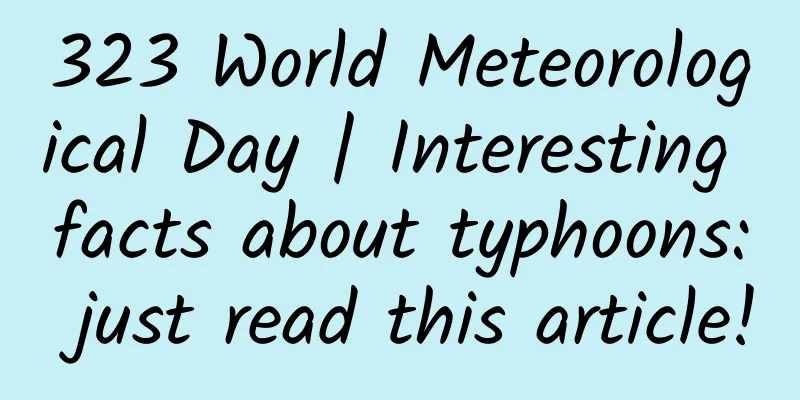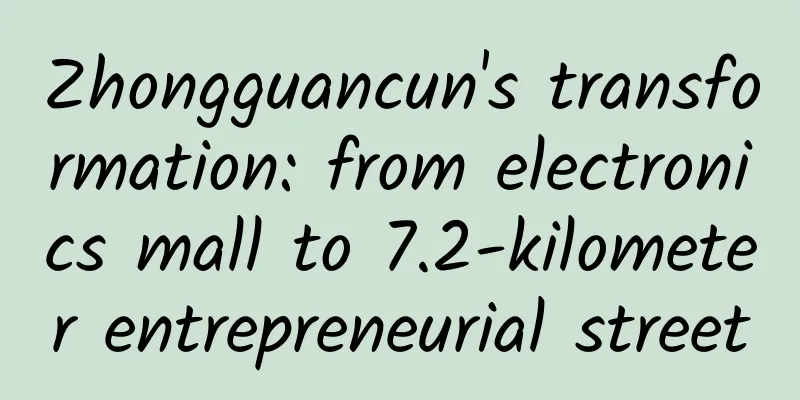How can space probes see more clearly?

|
At present, Tianwen-1 is about 184 million kilometers away from the Earth and about 900,000 kilometers away from Mars. Before that, when the probe arrived at a distance of about 2.2 million kilometers from Mars, it sent back my country's first close-up photo of Mars (Figure 1). In the photo, the iconic landforms of Mars, such as Acidalia Planitia, Chryse Planitia, Meridiani Planum, Schiaparelli Crater, and Valles Marineris, are clearly visible. However, for non-professionals, the information they can see is still too little. So how can spacecraft, satellites and other probes see more clearly which are plains, mountains, plateaus... Figure 1 Mars photographed by Tianwen-1 In order for the probe to clearly see the targets on the planet it is investigating, it is necessary to understand several key indicators of cameras on satellites, spacecraft and other probes. These indicators are spectral resolution, spatial resolution and temporal resolution. Spectral resolution is simply the ability to distinguish "color". White light alone is composed of a series of different colors (wavelengths) of light (Figure 2). Only visible light can be recognized by humans. Spectra outside of visible light can only be detected by instruments. Spectral resolution is the ability to distinguish the spectral details of objects in the image. It is the minimum wavelength interval that satellite sensors can distinguish when receiving the radiation spectrum of objects. When the interval is small, the spectral resolution will be higher. Under the same spectral range, the more image bands there are, the higher the spectral resolution. For example, hyperspectral images often have higher spectral resolution than multispectral images. High spectral resolution is of great significance for the classification and recognition of image objects. High spectral resolution also has its disadvantages, that is, low spatial resolution. The images taken by Tianwen-1 this time are only black and white photos, which are mixed images of the visible light band range. Because they are single-band, they are displayed as grayscale images on the map. Panchromatic remote sensing images generally have high spatial resolution, but cannot display the color of objects, that is, the image has less spectral information (Figure 3). So what is spatial resolution? Figure 2 Dispersion of light: White light is actually composed of a series of different colors of light Figure 3 Schematic diagram of spectral resolution (left) and spatial resolution (right) Spatial resolution is generally defined as the ability of a detector to see the smallest object on the ground. In theory, it is the ability to distinguish spatial details of remote sensing images. It refers to the smallest target object that the sensor can distinguish, which is the ground range corresponding to one pixel in the actual satellite observation image. For example, the resolution of the Gaofen-2 satellite developed by my country has reached 0.8m panchromatic/3.2m multispectral, bringing my country's space-based earth observation capabilities into the sub-meter era; the spatial resolution of the Gaofen-11 satellite has been further improved, reaching 0.1m[1], achieving a relatively high spatial resolution. The spatial resolution of the Gaofen-11 satellite panchromatic image is 0.1m, which means that the actual ground size corresponding to one pixel in the image is 0.1m*0.1m. High spatial resolution images play an important role in influencing the identification and visual interpretation of target objects. What factors are related to the size of spatial resolution? Generally speaking, the closer you are to the object, the clearer you can see. This is called the orbital height H of the detector. It is also related to the aperture size D of the camera on the detector. The larger the "eye", the clearer you can see. It is also closely related to the scientific level of development in various countries, that is, it is related to the pixel size a on the detector. From this, we can get the formula [2]: R=H*a/(D*F) Where F=f/D (F is the f-number, f is the focal length of the camera aperture) For example, two of the six payloads carried by the orbiter of the Tianwen-1 probe are optical imaging devices, namely a medium-resolution camera and a high-resolution camera. The high-resolution camera has an imaging resolution of 0.6 meters at an orbital altitude of 300 kilometers near Mars. According to relevant media reports, the aperture of the high-resolution camera is only 400 mm (Figure 4). Figure 4: Mars High Resolution Camera main mirror (Φ400mm aperture) So does the higher the spatial resolution, the better? Actually, it is not. As the saying goes, "a mouse's eyesight is short-sighted and a leopard can only be seen through a tube." It can be seen that the higher the spatial resolution, the better. The higher the resolution, the smaller the range that can be seen. In other words, you can see the details but not the whole picture. It is like using a magnifying glass to find a location on a map (Figure 5). Where is the specific location (** street, ** village), but do you know where it belongs? We still don't know the specific location and are still at a loss. Therefore, we need to see clearly and see a wider range in order to gain insight into the overall situation. This requires us to be in a higher orbit and see a larger range. At this time, the spatial resolution of the detector will not be too high. At this time, we only need to have a rough understanding of a range, just like we narrow the map range and know that the location we are looking for is in ** county, ** city, ** province, and then we will naturally understand where the location we are looking for is based on the knowledge we have mastered. For example, Gaofen-2 is a low-orbit satellite (orbital altitude is about 600km), so its field of view for one imaging observation is small. It uses two cameras to stitch images, with an imaging width of 45km. Under the condition of 23° side swing, it can achieve repeated observation of any area on the earth's surface within a 5-day cycle. From the above analysis, it can be seen that although Gaofen-2 has achieved a high spatial resolution, it still has problems such as insufficient observation range. Therefore, if accurate location information is needed, it requires the joint work of high and low orbit detectors. The low orbit detector obtains high-resolution images, while the high orbit detector obtains images with a wider range. Figure 5 High resolution can only provide a short-sighted view of a small area In addition to seeing clearly and in a larger range, it is also necessary to ensure sufficient time for observation. Although the detected planet is rotating continuously, in a lower orbit, the rotation speed of the planet is less than the flight speed of the detector, and the detector quickly flies away from the observed position. Therefore, it is impossible to guarantee that the observed position is continuously detected at all times. Therefore, the concept of time resolution is proposed. As the name suggests, time resolution is the ability to repeatedly observe the same location. Time resolution is usually also called revisit period. The shorter the revisit period, the higher the time resolution. High time resolution plays an important role in the detection of dynamic changes of ground objects. For the earth, the period of the earth's rotation is 23 hours, 56 minutes and 4.09 seconds, which is close to 24 hours. Therefore, based on the knowledge of Newton's universal gravitation learned in high school, it can be calculated that the height of the geosynchronous geostationary orbit is about 36,000 kilometers (Figure 6). This is a question that is often tested in the college entrance examination. Can you calculate it? As long as the detector is in the geosynchronous geostationary orbit, the angular velocity of the detector is the same as the angular velocity of the earth's rotation. In this way, the detector will always observe continuously above the same location. my country has successfully developed the first geostationary orbit high-resolution optical remote sensing satellite, Gaofen-4. Unlike Gaofen-2, Gaofen-4 is a high-orbit satellite. Since it is in a geostationary synchronous orbit of 36,000 km, each photo taken can cover 160,000 square kilometers. By taking 60 photos, it can cover 10 million square kilometers of the Western Pacific Ocean. The shooting time is about 4 to 12 minutes. It can basically realize real-time monitoring of enemy aircraft carrier battle groups in military hotspots and understand the real-time dynamics of enemy aircraft carrier battle groups, which has extremely important military significance. However, since the spatial resolution of Gaofen-4 is only 50m, the aircraft carrier is only a fuzzy image composed of a few pixels in its picture. Due to too few pixels, it is difficult to distinguish aircraft carriers from targets such as supertankers scattered across the ocean, so it cannot be used to directly identify targets. Although the combination of high-orbit satellites and low-orbit satellites can solve the above problems to a certain extent, using high-orbit satellites with high temporal resolution for census on the one hand and low-orbit satellites with high spatial resolution for detailed investigation on the other hand, there is still a problem of insufficient timeliness. Therefore, the development of high-resolution geostationary orbit satellites is extremely important for my country to monitor the real-time dynamics of military hot spots. Similarly, if you want to take photos at a fixed position on Mars for a long time, the period of Mars' rotation is 24 hours, 37 minutes and 22.6 seconds, which is similar to the time of Earth's rotation, but its radius is only half of that of the Earth, and its synchronous geostationary orbit altitude is about 17,000 kilometers. Figure 6 Geostationary orbit Is there a detector with high spectral resolution, spatial resolution, and high temporal resolution? The method is to increase the aperture of the geostationary orbit camera to ensure high spatial resolution while ensuring temporal resolution. For example, the spatial resolution of GF-4 is about 50m. Whether for the ocean or land, continuous battlefield surveillance is very important. Only when the spatial resolution reaches 10m can medium-sized military and civilian ships at sea over 100m and large targets such as aircraft carrier groups be discovered, locked, and tracked. Therefore, the aperture of the GF-4 camera can be expanded by 5 times to about 3.5m, and the visible and infrared bands can be used to track targets in real time. It can also work in conjunction with low-orbit high-resolution satellites. Using low-orbit satellites to discover and lock targets and using high-orbit satellites to stare and track in real time has become a good means of monitoring. The high resolution of low-orbit satellites can clearly see local targets, and the high resolution of low-orbit satellites can be used to discover and identify enemy warships, fighter jets, tanks, assembled troops, etc., and the high temporal resolution of high-orbit geostationary orbit satellite cameras can be used to track them in real time. In addition to the exploration of extraterrestrial planets such as Mars, Earth observation is also a key focus of future development. High-resolution Earth observation satellites are developing rapidly, and the Earth observation system has evolved from the initial single-satellite model to the current light and small satellite constellation (Figure 7), realizing all-day, all-weather, and all-round refined Earth observation. In the future, the Earth observation satellite constellation will be dynamically networked with space nodes such as communication satellites, navigation satellites, and aircraft to establish a space-based space information network to realize real-time services of intelligent air and space information, forming an intelligent Earth observation system that simulates brain perception and cognitive processes. By combining knowledge in the fields of Earth space information science, computer science, big data science and cloud computing, as well as brain science and cognitive science, an intelligent Earth observation "brain" system that integrates measurement, calibration, target perception and cognition, and service users in the space-based space information network environment will be formed [3]. Figure 7 Earth Observation Brain References [1] Hao Zhe, From Earth Observation Satellite to Earth Observation Brain, China Surveying and Mapping, 2020, 10: 10-13. [2] Liu Tao, How to calculate the spatial resolution of optical earth satellites, International Space, 2013, 10. [3] Li Deren, Wang Mi, Shen Xing, et al., From Earth Observation Satellites to Earth Observation Brains, Journal of Wuhan University, 2017, 42(2): 1-7 |
Recommend
The secrets to customer acquisition, conversion and repeat purchases in the P2P industry are all written here!
The P2P industry is so hot nowadays that major on...
How to advertise on Kuaishou? HOW DOES IT PERFORM?
1. Introduction to Kuaishou Advertising Kuaishou’...
Lao Chen's practical course for beginners to quickly start a Douyin short video account and increase followers, suitable for beginners, quickly increase followers
Lao Chen · Douyin short video novice quick accoun...
Adidas Migrates SAP Environment to Amazon Web Services to Digitally Transform Core Business
Transform your business and become a more data-dr...
Osteoarthritis is not just a problem for the elderly, these groups of people should also be careful!
Osteoarthritis: a growing global disease burden O...
It has affected 18 provinces! It's like turning on "eye protection mode" when you go out... Why are sandstorms so frequent this year?
At present, a large-scale sandstorm is affecting ...
The latest research confirms: The higher the children's education, the longer their parents live
Since ancient times, people have been striving fo...
How can Toutiao quickly gain millions of followers? Here are 10 effective routines
With the rise and prosperity of the mobile Intern...
The main reason old users buy iPhone 7 is Merrill Lynch: battery life has been improved
If you’ve used an iPhone before, you’ll know that...
10 bad habits that cancer cells love the most! If you don't pay attention, they will hollow out your body~
People always want to find some time and space fo...
Do you know how hard your belly works to avoid bursting?
We all know that our skin (epidermis) is stretcha...
How can “cultivation games” improve user retention and conversion rates?
In recent years, all major leading products have ...
Jing Xufeng's chat method for building a strong mentality - Let you strengthen your mentality through chatting
Jing Xufeng's chat method for building a stro...
Can AI change the way science is done?
Artificial intelligence (AI) is shaping the scien...
In-depth study of Android Dalvik's Dex file format
Case Studies In this case study, we will examine ...









